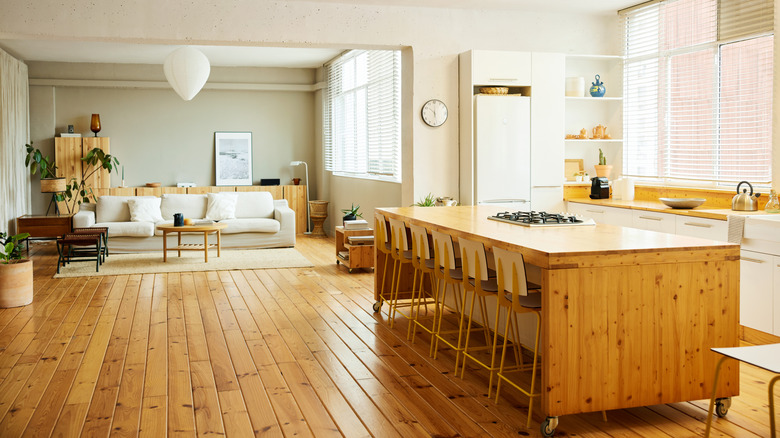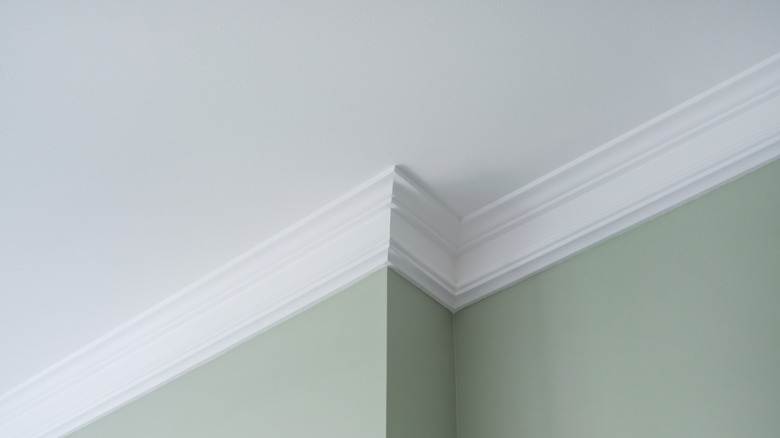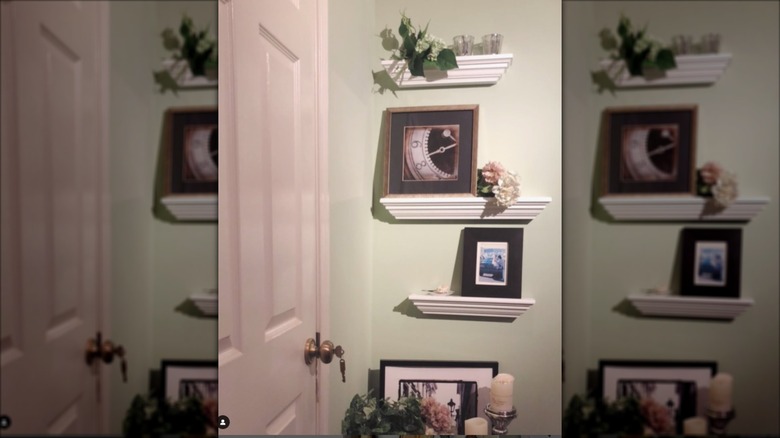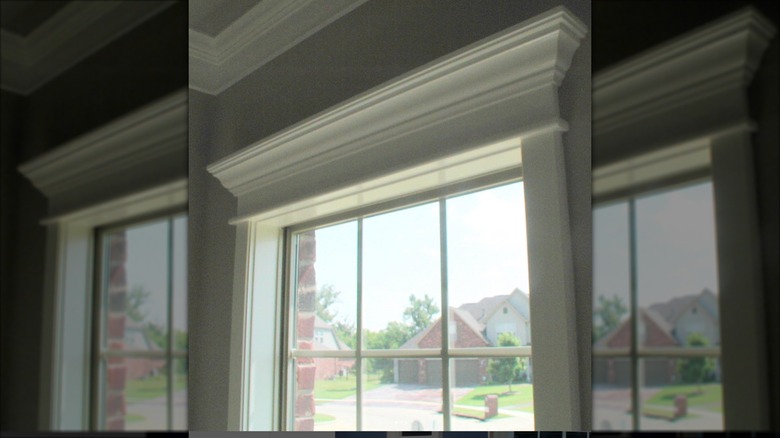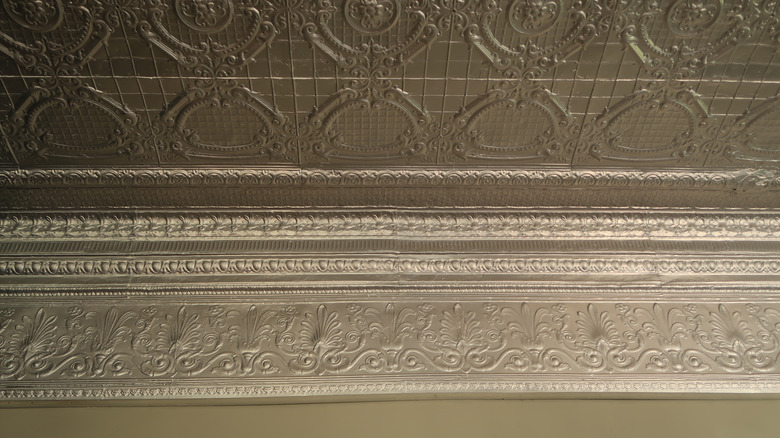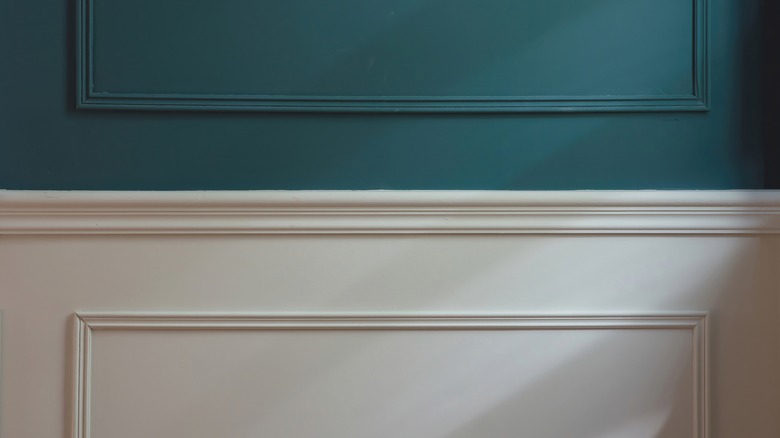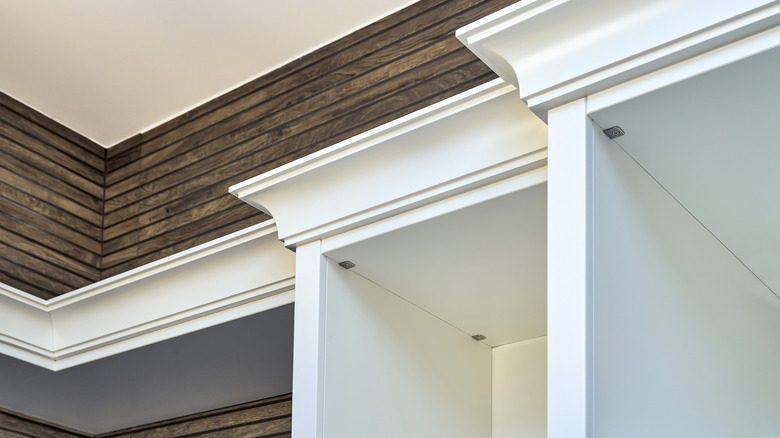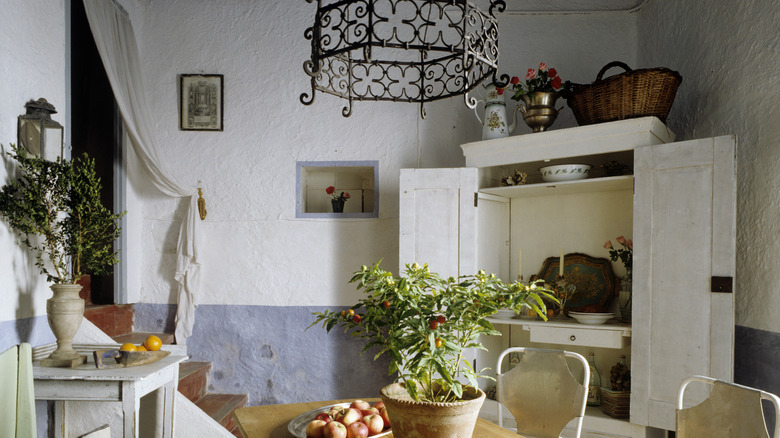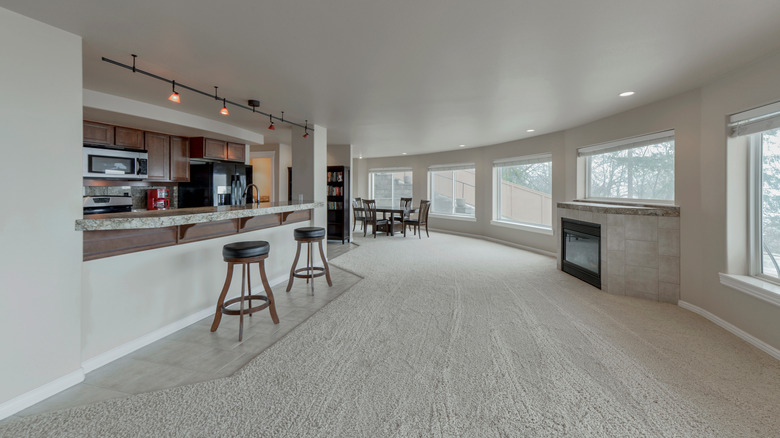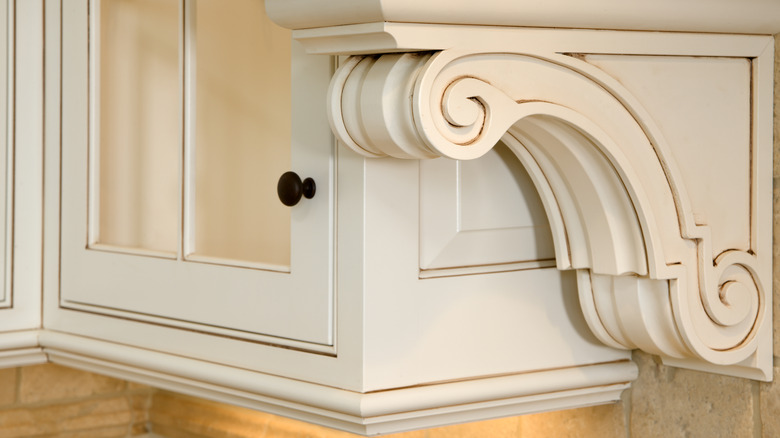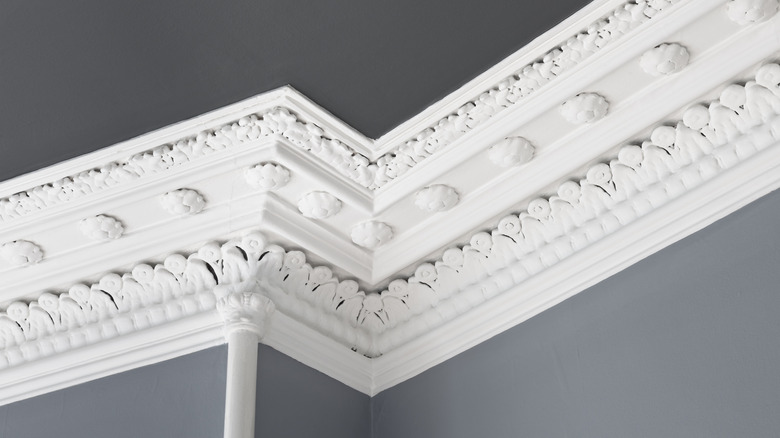10 Impressive Faux Crown Molding Ideas To Transform Your Kitchen
Look up in any vintage home or newer build with an attention to beautiful design and you will spot it: crown molding! This fun architectural element is often used as a way to make a room look finished, as well as to draw the eye up to the top of the room, a great trick for making even the smallest rooms look more spacious and grand. It's an especially useful feature in many kitchens, which often have a more cramped feeling due to cabinetry and larger appliances. If you're a renter or looking to make an immediate change to your kitchen, you may be hunting for a less permanent solution than installing wood or plaster moldings along the ceiling. Faux moldings can be a great element to add, either using them in the traditional way along your ceiling or placing them in other spots to create interest, character, or a focal point.
Faux moldings come in almost as many designs as real ones do, including elaborately carved moldings like this acanthus design or more staid ribbed molding, both available from The Home Depot. Some provide adhesive backs that allow you to peel and stick them wherever you want them, making them a great rental-friendly solution and a way to add no-tools-needed crown molding charm and interest to your kitchen in minutes. Others can be attached with small finishing nails or clips. Faux moldings are usually made of polyurethane, polystyrene, or silicone materials, and are very lightweight compared to wood or plaster. This makes them easy to install, even for beginning DIYers, saving you money since professional installation is what usually makes the cost to install crown molding so high.
Along the ceiling
The most common use for both real and faux molding is typically along the top of the wall where it meets the ceiling along the perimeter of the room. It not only draws the eye up and adds architectural interest to the space overhead, but it can provide a more coordinated look where two paint colors or materials meet for a seamless and finished look. Moldings come in more contemporary and clean-lined designs, or in more elaborate carved designs like fruit and botanical accents that can give a room a rich, Victorian-era look.
Under a floating shelf
Floating shelves can be a great way to open up your kitchen and provide storage without the heaviness of conventional cabinets. While open shelves often feel a bit more contemporary in style than conventional cabinets, adding some crown molding around the edge can give them a more vintage and age-old feel, either attached to the wall or the shelf itself. It's also great to add more visual weight to slender inexpensive shelving or make shelves look like more custom built-in storage. You can even use strips of faux crown molding as a slender shelf for holding spices or small potted herbs on the wall above a counter.
Above windows and doors
If you are stuck with a plain or uninspiring window over the sink, use some faux crown molding to top it off. Not only will this draw the eye upward and make a shorter window seem taller, but it can frame the window nicely and make it a focal point in the kitchen, no matter its size. This is a great chance to use a more ornate bit of molding even if you have other existing molding in your kitchen. Or use it below to create a ledge where you don't have one. Faux molding won't buckle in high moisture spots like above the sink. You could also use it above a door with the same goal in mind of making a lower door feel higher — a perfect hack if your ceilings and doors seem out of balance.
Framing tin ceilings
Vintage tin ceiling tiles — real or peel-and-stick — are coming back in style in many interiors and they are great for framing out with faux crown molding. You can purchase lightweight tin crown molding from retailers or treat poly material molding with metallic paints to get your crown molding to match your tin ceiling tiles. This creates a seamless look that makes the entire room feel higher and wider. The addition of molding can also hide some areas against the wall where tiles are cut unevenly or imperfectly at the corners and edges of the room.
Above paneling
Crown molding is also a great topper for wainscoting and other types of paneling affixed to the wall. For a rental-friendly way to add texture and interest to a kitchen wall, use a few sheets of faux wainscoting to add texture bordered on top with a strip of crown molding as a stylish chair rail. Or use it around the top of higher paneling to make a ledge for holding artwork or decorative plates without having to drive nails or hooks into the wall while still adding the character of a vintage kitchen.
On top of cabinets
The awkward space between kitchen cabinets and the ceiling can often be an eyesore in more modern homes, where soffits and other elements can prevent the cabinets from going all the way to the ceiling. Use some flared molding on top to create a more architectural and intentional look to even the plainest box cabinets. Higher molding can also give you some out-of-sight storage for flatter items. You can also modify these cabinets by building a false front for the open space with some plywood and a strip of faux crown molding.
Above pantry or sideboard
If you have a large pantry cabinet or tall sideboard in your kitchen, you may be looking for a way to make it match other elements in your kitchen like built-in cabinetry. You can instantly elevate a prefab, boring cabinet into a unique custom-looking piece by adding some faux crown molding along the top edge of the cabinet. This can also give a shorter cabinet a slightly higher profile to make it more of a focal point or high-impact element in your kitchen. Or turn an inexpensive bookcase into a beautiful dishware storage hutch by adding some molding along the top.
Under a kitchen island or peninsula
You can also add faux crown molding to the underside of an uninspiring kitchen island or peninsula for a more luxe effect. This makes the island feel much more custom and distinctive and is especially useful if your island lacks character like in many rental homes. Just adhere the molding with adhesive strips or finishing nails where the side meets the lip of the countertop. Paint it to match the material of the island for an even more custom look or add some matching faux corbels to support an extended counter.
Under your cabinets
Adding a little bit of crown molding to the underside of your cabinets can be a great way to make your kitchen feel more vintage and architecturally interesting. Combine molding with vintage corbels and brackets for a more ornate and luxurious look that can turn even the newest-looking kitchen cabinets, with a little help from temporary molding, into a gorgeously appointed space.
Breaking up pattern or color
A crisp or creamy white crown molding can be a great way to create some high contrast in a kitchen that sports a dark and dramatic color like black, navy, or darker gray by breaking it up and adding a bit of brightness. It's also great if you want to create an all-over patterned wallpaper look where the molding will break up the line between the ceiling and the walls, resulting in a look that's far more finished and expensive.
